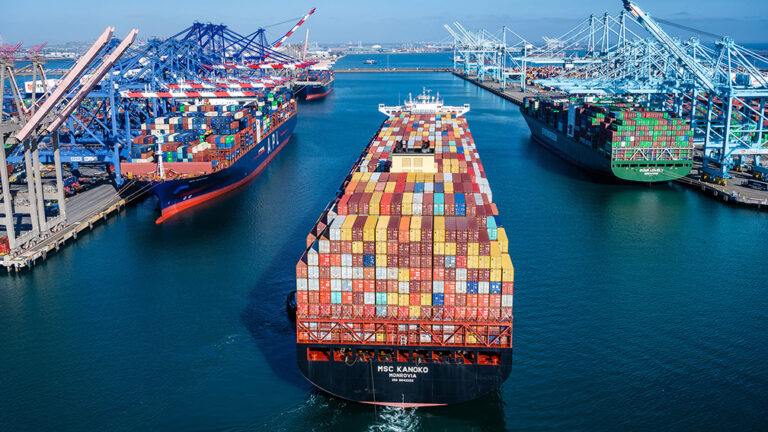For trucking, business is still good as both freight amounts and rates continue to rise. Both measurements, however, are still constrained by COVID-related issues as well as other factors. Class 8 truck production remains limited, making new trucks harder to come by, and carriers are still facing difficulties finding enough new drivers to keep fleets rolling.
“With inventories rebuilding, strong U.S. consumer balance sheets, booming capital goods orders and infrastructure stimulus in the pipeline, the fundamentals of the freight cycle remain positive,” commented Tim Denoyer, vice president and senior analyst at ACT Research, in a Sept. 28 release of the firm’s For-Hire Trucking Index.
What Denoyer means is the signs are pointing to more freight and higher rates. Unfortunately, the trucking industry’s ability to handle that freight is reigning in the growth.
“Despite the volume index slowing, end demand remains strong, and the slowdown is partly due to capacity limitations, from ports to trucks to trailers to drivers,” Denoyer added.
While capacity limitations have an impact, many manufacturers are still experiencing problems obtaining needed parts and materials, especially semiconductors.
Shipping ports also play a large role in current constraints. The container shipping industry, like the U.S. trucking industry, has dealt with COVID-19 issues since the pandemic began.
While a driver who tests positive for COVID-19 may have to shut down a truck, a ship — transporting thousands of truckloads of freight — that has just one crew member tests positive may not be allowed to dock. Even if the ship is granted clearance, the port may be closed because someone on its staff tested positive.
There are other port issues, too. California’s Long Beach and Los Angeles ports account for fully one-third of all U.S. imports. Those ports, however, are facing multiple issues that keep them from running at full capacity.
As in many areas of the country, labor has been a problem on the West Coast. The unemployment stimulus offered by the U.S. government finally expired in September, too late to impact August employment numbers.
Trucks are also an issue. Tough new truck emissions rules at California ports have made it impossible for owners of all but the newest trucks to gain access, while increased labor costs associated with California’s AB5 legislation have made carrier use of independent contractors much more expensive.
The result is a record number of ships waiting at sea until dock space becomes available. As of this writing, more than 60 ships awaited unloading at southern California terminals. Other ports, including East Coast facilities, are also seeing delays, although not as severe.
The bright spot in the port problem is that ships are getting bigger. Newer ships have the ability to carry more than 20,000 TEUs (20-foot equivalent units). That number equates to more than 10,000 truckloads of cargo on one ship, which means more trucks and rail cars are needed to transport the containers overland to their final destinations.
Unfortunately, many of those containers that do make it into the ports are destined for rail transport to an inland destination. Just like trucks, trains need specialized chassis to haul containers. Those chassis are in short supply. A 200% tariff imposed on imports of Chinese steel all but halted manufacture of rail chassis, and the railroads can’t get enough of them to haul available containers.
Shippers are responding by sending containers by truck or by unloading containers at rented warehouse facilities, reloading the cargo into van trailers for transport to destination.
The American Trucking Associations (ATA) For-Hire Truck Tonnage Index increased 0.5% in August after months of decline, including a 1.1% decline in July. The August index was 110.3, indicating that freight levels were 10.3 higher than they were in the base year of 2015.
“August’s monthly gain, while small, was the first since March,” said Bob Costello, chief economist for ATA. “It is important to remember that ATA’s tonnage data is dominated by for-hire contract freight, with a very limited amount of spot market freight.”
According to the ATA release, freight levels in August dropped 0.5% compared to August 2020, when the economy was just emerging from the pandemic recession.
Costello also noted that large carriers are operating a reduced number of trucks compared to last year. Both truck and trailer manufacturers are experiencing huge order backlogs, with the wait for new trucks now approaching 18 months.
Used trucks provided an alternative for some carriers and owner-operators, but that supply has virtually dried up too. As older trucks are traded for the new units that become available, tractors trickle in to the used market, but many of those are spoken for and quickly sold.
Drivers continue to be in short supply as well, as older drivers leave the industry and the supply of new drivers remains constrained. New FMCSA rules for the training of new drivers, including a federal registry for training providers, will take effect in February 2022. Designed to improve the safety and performance of entry level drivers, the new requirements are sure to further constrain the supply.
The Cass Freight Index showed a more positive result for freight levels. According to the Cass index for shipments, August freight levels rose 4.8% over July numbers and were up 12.3% over August 2020 numbers.
The Cass Index measures shipments across multiple modes of transportation, including rail, ship, air, pipeline, trucking and more.
Cass also maintains an Index for freight expenditures, noting that dollars spent on shipping rose 9.2% in August from July numbers and were up 42.2% over August 2020 expenditures.
So, while freight remains strong, the Cass report warns, “The dynamics of tight supply and exceptionally strong demand which have characterized the past year or so will not last indefinitely. The chip shortage continues to be a key fulcrum on which much in the world economy depends.”
Coming months will have more of the same, with plenty of freight to haul and higher rates to haul it, but the number of impediments to growth seems to increase each month.
Cliff Abbott is an experienced commercial vehicle driver and owner-operator who still holds a CDL in his home state of Alabama. In nearly 40 years in trucking, he’s been an instructor and trainer and has managed safety and recruiting operations for several carriers. Having never lost his love of the road, Cliff has written a book and hundreds of songs and has been writing for The Trucker for more than a decade.














